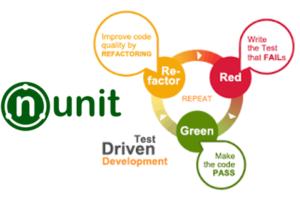Nunit VS Inbuilt TDD
Unit testing is a sort of testing done on the designer side. It is utilized to test techniques, properties, classes, and congregations. Unit testing is not testing done by the quality affirmation office. Unit testing is utilized to test a little bit of workable code (operational) called unit. This urges designers to adjust code without quick worries about how such changes may influence the working of different units or the program all in all. Unit testing can be tedious and dull, yet ought to be done completely with persistence.
What Is NUnit?
NUnit is a developing, open-source framework designed for writing and running tests in Microsoft .NET programming languages. NUnit, like JUnit, is a part of test-driven development (TDD), which is a piece of a bigger programming design paradigm known as Extreme Programming (in XP).
NUnit options have a GUI like that utilized as a part of JUnit. The tests may be run persistently. Results are given quickly. Multiple tests may be run simultaneously. No subjective human judgments or translations of test outcomes are required. The effortlessness of the framework makes it conceivable to effectively adjust bugs as they are found. The present rendition of NUnit is composed in C#, a protest arranged programming (OOP) language that joins the energy of C++ with the effortlessness of Visual Basic. NUnit is one of a group of related testing frameworks known as xUnit.
- Unit Testing alludes to what you are testing, TDD to when you are testing.
- The two are orthogonal.
Unit Testing implies, well, testing singular units of conduct. An individual unit of conduct is the littlest conceivable unit of conduct that can be independently tried in isolation. (I realize that those two definitions are roundabout, however, they appear to work out great practically speaking.)
You can compose unit tests before you compose your code, after you compose your code or while you compose your code.
The Difference Between NUnit Testing
TDD implies (once more, sort of self-evident) giving your tests a chance to drive your development (and your design). You can commit that with the unit tests, functional tests, and acknowledgment tests. Generally, you utilize every one of the three.
The most essential piece of TDD happens to be the middle D. You let the tests drive you. The tests guide you, what to do next when you are finished. They disclose to you what the API will be, what the design is. (This is critical: TDD is not tied in with writing tests first. There are a lot of ventures that compose tests first yet don’t rehearse TDD. Writing tests initially is essentially essential for having the capacity to give the tests a chance to drive the development.)





